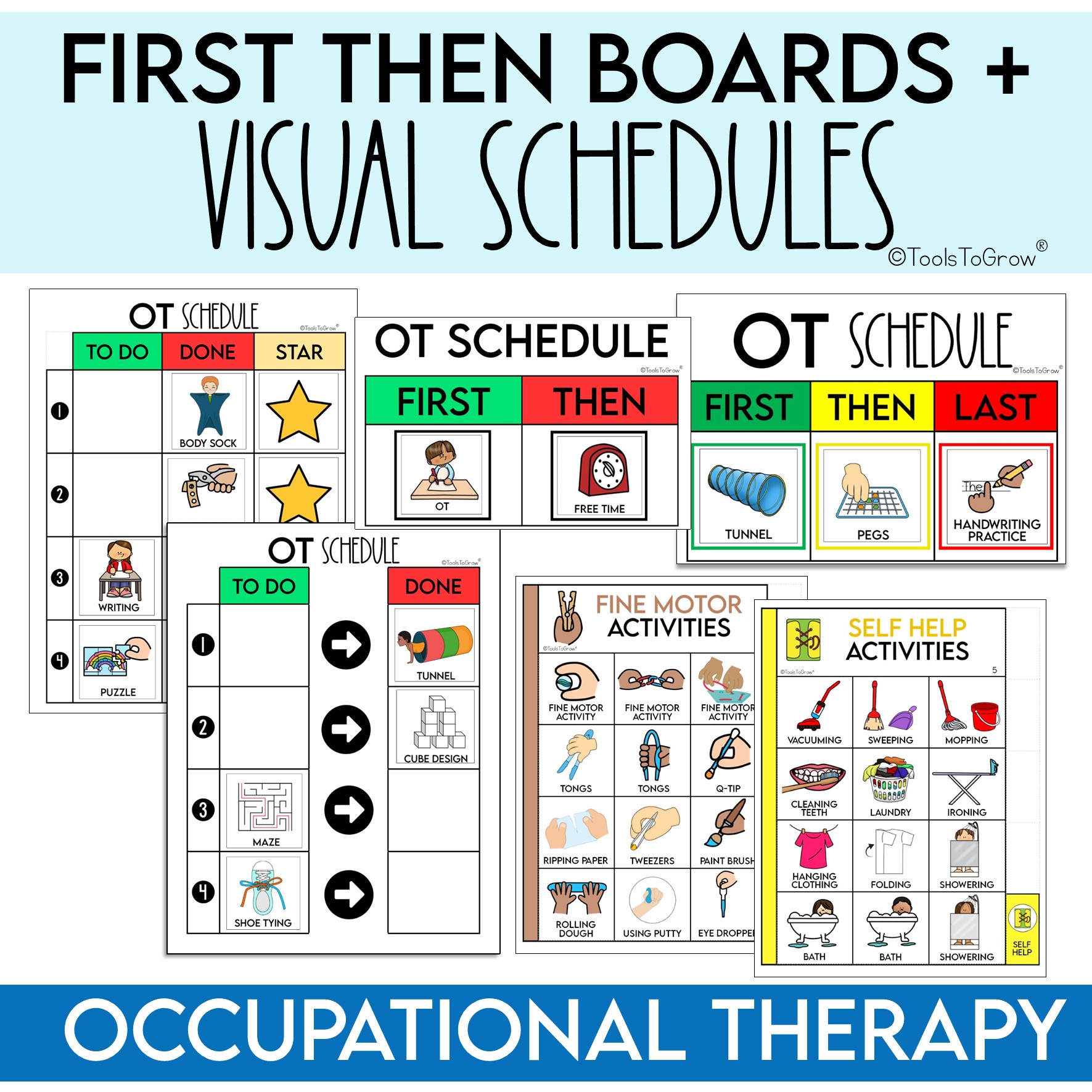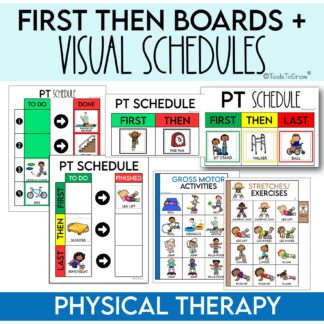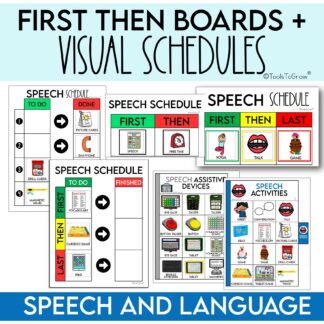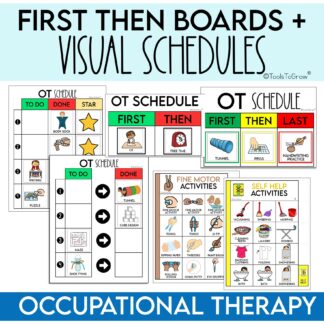Description
Visual schedules are used to communicate the sequence of upcoming events and activities. This is important for those students that may become anxious or require a high level of predictability during their day.
Visual schedules are a simple and powerful tool you can use in therapy sessions! Using visual supports quickly and easily provide structure to your sessions. Visual schedules can be used to improve transitions, provide organization, set expectations, and help children stay on task during a therapy session.






